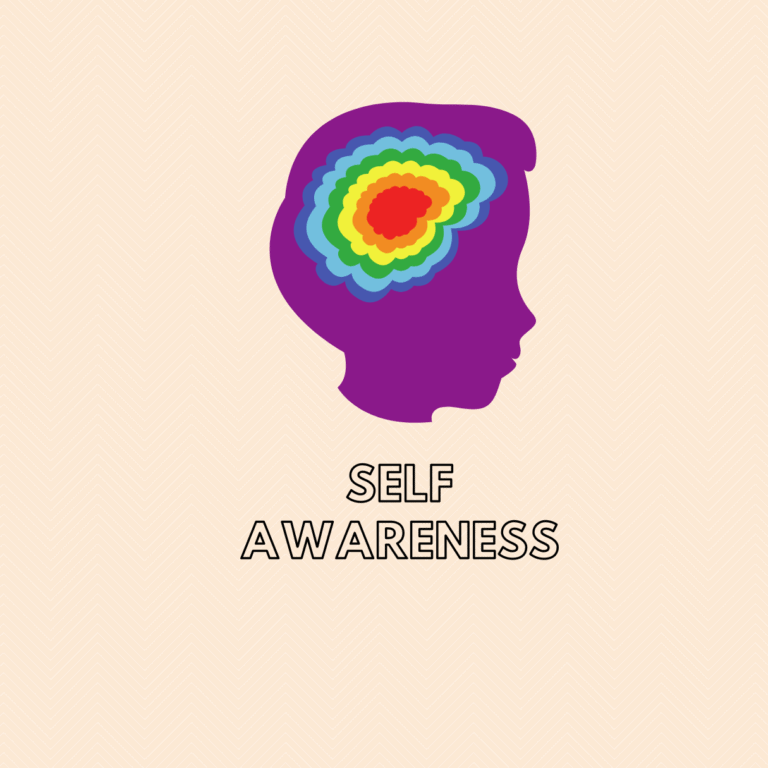Empathy as a Driver for Innovative Thinking
Have you ever stopped to consider how putting yourself in someone else's shoes could lead to groundbreaking ideas and solutions?
Empathy, often seen as a personal virtue, can also be a powerful driver for innovative thinking in various professional settings. Its ability to foster a deeper understanding of others' experiences and perspectives has been increasingly recognized as a crucial element in problem-solving, design thinking, and market research.
But how exactly does empathy play a role in driving innovation, and what practical steps can you take to leverage its potential in your own work?
Key Takeaways
- Empathy enhances collaboration and trust within teams, leading to better overall performance.
- Empathy drives creative problem-solving and innovation by providing a comprehensive understanding of problems from different angles.
- Empathy is crucial in product development and customer-centric design, as it helps create intuitive and user-friendly solutions that meet user needs.
- Empathy plays a significant role in market research and insights, allowing businesses to connect with consumers on a profound level and tailor strategies and offerings to resonate with the audience.
The Power of Empathetic Understanding
Understanding the emotions and perspectives of others can significantly enhance your ability to think innovatively and solve complex problems. When it comes to leadership and team dynamics, empathy plays a crucial role in fostering an environment where people feel understood, valued, and motivated. Leaders who possess emotional intelligence and prioritize empathy create a positive impact on team dynamics, leading to enhanced collaboration, trust, and overall performance. By understanding the feelings and experiences of team members, leaders can tailor their approach to communication, support, and conflict resolution, ultimately driving innovative thinking within the team.
Empathy in leadership not only strengthens relationships but also contributes to a more inclusive and supportive work culture. When team members feel that their perspectives and emotions are acknowledged, they're more likely to express their ideas freely, take creative risks, and contribute to innovative solutions. Through empathetic understanding, leaders can tap into the diverse perspectives and talents within their teams, leading to a more robust and innovative problem-solving approach.
Therefore, integrating empathy into leadership and team dynamics is vital for cultivating an environment where emotional intelligence and innovative thinking thrive.
Empathy's Impact on Problem-Solving
Empathy enhances problem-solving by fostering deeper understanding of others' perspectives and emotions, leading to more effective and innovative solutions. When you consider empathy's influence on problem-solving approaches, you'll find that it has a profound impact on the way challenges are approached and resolved.
Here's how empathy affects problem-solving:
- Enhanced Understanding: Empathy allows you to gain a comprehensive understanding of the problem by putting yourself in the shoes of others, enabling you to see the issue from different angles.
- Improved Communication: By empathizing with others, you can communicate more effectively, leading to better collaboration and idea generation.
- Creative Solutions: Empathy inspires creative problem-solving as it encourages you to think outside the box and consider unconventional approaches.
- Human-Centric Solutions: With empathy, the solutions generated are often more human-centric, addressing the actual needs and emotions of the individuals involved.
In essence, empathy transforms problem-solving by infusing it with a deeper understanding of people's needs and emotions, leading to more holistic and effective solutions.
Fostering Innovation Through Empathy
To foster innovation through empathy, consider incorporating diverse perspectives and experiences into your problem-solving processes. Empathetic leadership plays a crucial role in fostering an innovation mindset within your team. By understanding and valuing the unique perspectives of your team members, you can create an environment where innovative thinking thrives. Encouraging open and empathetic communication allows for the sharing of diverse ideas and experiences, which can spark creative problem-solving approaches.
Empathetic leadership involves actively listening to your team, understanding their needs, and considering their viewpoints when making decisions. By demonstrating empathy in your leadership approach, you can inspire a culture of understanding and collaboration that propels innovative thinking. When team members feel understood and valued, they're more likely to contribute their unique perspectives and ideas, leading to innovative solutions.
Furthermore, an innovation mindset can be nurtured through empathy by acknowledging and addressing the needs and challenges of your target audience. By empathizing with the end users of your products or services, you can gain valuable insights that drive innovative improvements and developments. Embracing empathy in your approach to innovation fosters a deeper understanding of the human experience, leading to solutions that truly resonate with people's lives.
Leveraging Empathy for Product Development
Now, let's talk about leveraging empathy for product development.
You can use a user-centric design approach to create products that truly resonate with your target audience.
Understanding user needs and employing human-centered problem-solving can lead to innovative and successful product development.
User-Centric Design Approach
Understanding the needs and experiences of your target users is essential for creating products that truly resonate with them. By adopting a human-centered approach, you can leverage design thinking to develop solutions that are rooted in empathy and geared towards addressing real user needs. This empathetic problem-solving approach allows you to prioritize the user experience, leading to more intuitive and effective product designs.
Consider the following key elements of a user-centric design approach:
- Conduct in-depth user research to gain insights into the needs and preferences of your target audience.
- Use empathy to put yourself in the shoes of the users and understand their challenges and motivations.
- Iterate and refine your designs based on user feedback to continually improve the product's usability and relevance.
- Collaborate cross-functionally to ensure that all aspects of the product align with the user-centric approach.
Understanding User Needs
Leveraging empathy in product development involves immersing yourself in the experiences and perspectives of your users to gain deep insights into their needs and motivations. Understanding user needs is pivotal for creating products that truly resonate with your target audience, leading to enhanced user experience and ultimately, greater customer satisfaction.
| User Needs | Insights |
|---|---|
| Conduct user research | Gain understanding of user behavior and pain points |
| Engage with users | Gather direct feedback and uncover unmet needs |
| Analyze data | Identify patterns and trends in user interactions |
| Iterate and test | Refine products based on user feedback and behavior |
Human-Centered Problem Solving
To foster innovative thinking in product development, immerse yourself in the experiences and perspectives of your users, gaining deep insights into their needs and motivations through human-centered problem solving. This approach allows you to understand the human aspects of the problems you aim to solve, leading to empathy-driven creativity and human-focused innovation.
By prioritizing human-centered problem solving, you can create products that truly resonate with your users and address their pain points effectively. This method also enables you to develop solutions that are intuitive and user-friendly, enhancing the overall user experience.
Ultimately, human-centered problem solving not only fosters empathy within your team but also leads to the development of products that genuinely meet the needs of your users.
- Understand user experiences and perspectives
- Gain deep insights into user needs and motivations
- Create intuitive and user-friendly solutions
- Foster empathy within your team
Empathy's Role in Customer-Centric Design
When designing products, it's crucial to prioritize the needs and experiences of your customers. User-centered design principles ensure that your products are tailored to address the specific pain points and desires of your target audience.
User-Centered Design Principles
Understanding the needs and experiences of your customers is essential for creating successful, user-centered designs that truly resonate with your target audience. Design thinking and user experience are at the core of user-centered design principles, and empathy plays a crucial role in ensuring that your designs meet the needs of your customers.
Here are some key principles to consider:
- Empathize with Your Users: Put yourself in the shoes of your customers to understand their perspectives, needs, and pain points.
- Define User Needs: Clearly define the needs and requirements of your target audience to inform the design process.
- Iterate and Test: Continuously iterate on your designs based on user feedback and conduct usability testing to ensure a seamless user experience.
- Incorporate Accessibility: Ensure that your designs are accessible to all users, regardless of their abilities or disabilities.
Understanding User Needs
Considering your customer's perspectives, needs, and pain points is crucial for developing impactful designs that truly resonate with your target audience. User empathy lies at the heart of design thinking and empathetic problem-solving.
By understanding your users' experiences and emotions, you can create products and services that address their specific requirements, resulting in a more favorable customer experience. Empathy allows you to step into the shoes of your users, gaining valuable insights into their behaviors, motivations, and challenges.
This understanding enables you to design solutions that aren't only functional but also meaningful and relevant to your users' lives. Ultimately, incorporating user empathy into the design process leads to more customer-centric and innovative outcomes, fostering stronger connections between your brand and the people you aim to serve.
Empathetic Problem-Solving
To truly embody customer-centric design, you must embrace empathetic problem-solving as a fundamental aspect of your approach. Empathetic problem-solving involves understanding and addressing the unique needs and challenges of your customers with compassion and insight. This approach not only fosters stronger connections with your customers but also drives innovative solutions that truly resonate with their experiences.
To excel in empathetic problem-solving, consider the following techniques:
- Actively listen to customer feedback and experiences.
- Practice empathetic collaboration across multidisciplinary teams.
- Utilize empathy mapping to understand customer perspectives deeply.
- Implement rapid prototyping to test and refine solutions based on empathetic insights.
Empathetic Leadership and Team Dynamics
Empathetic leadership is essential for fostering positive team dynamics and promoting a culture of collaboration and understanding. When leaders prioritize empathy, they create an environment where team members feel valued, heard, and supported. This paves the way for increased trust, open communication, and a sense of belonging within the team. A leader who embodies empathy can understand the unique strengths and challenges of each team member, allowing them to allocate tasks effectively and provide the necessary support for individual growth. Additionally, an empathetic leader can mediate conflicts and ensure that all team members feel respected and included in decision-making processes.
To illustrate the importance of empathetic leadership, consider the following table:
| Empathetic Leadership Qualities | Impact on Team Dynamics |
|---|---|
| Active listening and understanding | Fosters trust and open communication |
| Recognition and validation of team members' emotions | Promotes a sense of belonging and psychological safety |
| Support for individual growth and well-being | Enhances team morale and productivity |
| Mediation of conflicts with empathy and fairness | Improves overall team cohesion and collaboration |
| Inclusion of diverse perspectives and voices | Drives innovation and creative problem-solving |
Empathy as a Catalyst for Change
Empathy is the force that propels change, driving individuals and organizations to seek innovative solutions and make a real impact.
By understanding and connecting with the experiences and emotions of others, you can gain valuable insights that lead to creative problem-solving and transformative initiatives.
The power of empathy lies in its ability to inspire action, foster collaboration, and drive meaningful change in the world.
Empathy Fuels Innovation
By understanding the perspectives and experiences of others, individuals can ignite a spark of creativity and foster an environment ripe for innovation. Empathy fuels innovation by providing a deeper understanding of the needs and challenges of people, which in turn inspires the development of groundbreaking solutions.
This empathetic approach to innovation is particularly evident in the realm of technology, where designers and engineers strive to create products and services that truly resonate with users on an emotional level.
- Human-Centered Design: Empathy-driven innovation puts human needs and experiences at the forefront of the design process.
- Enhanced User Experience: Understanding users' emotions and motivations leads to the creation of more intuitive and impactful technological solutions.
- Innovative Problem-Solving: Empathy fosters a mindset that seeks to address real-world challenges and improve people's lives through technology.
- Market Relevance: Empathy-driven innovation results in products and services that are more aligned with the diverse needs and desires of consumers.
Impact of Empathy
Understanding the perspectives and experiences of others can serve as a catalyst for driving meaningful change in both personal and professional contexts. Empathy's influence on creativity is profound, as it allows you to step into someone else's shoes, understand their needs, and generate innovative solutions to address those needs.
By empathizing with others, you can gain fresh insights and inspiration, leading to the development of unique and groundbreaking ideas. Furthermore, empathy-driven problem-solving techniques enable you to approach challenges from a human-centered perspective, considering the emotions and motivations of those affected.
This approach not only fosters a deeper connection with the individuals involved but also results in more effective and sustainable solutions. Embracing empathy as a driving force for change can revolutionize the way problems are approached and solutions are devised, ultimately leading to a more empathetic and innovative world.
The Emotional Intelligence of Empathy
Understanding and acknowledging the emotions of others is a key aspect of emotional intelligence and can greatly influence innovative thinking. The emotional intelligence of empathy involves not only recognizing emotions but also being able to manage and respond to them effectively. By honing your empathetic skills, you can enhance your ability to understand the needs, desires, and motivations of those around you, leading to more impactful and innovative solutions.
Here are some key elements of the emotional intelligence of empathy:
- Emotional Connection: Building a strong emotional connection with others allows you to gain deeper insights into their perspectives and experiences. This connection forms the foundation for meaningful interactions and collaborative problem-solving.
- Empathetic Listening: Actively listening to others and seeking to comprehend their emotions and viewpoints without judgment is crucial for developing emotional intelligence. It fosters trust and openness, creating an environment where innovative ideas can flourish.
- Emotional Regulation: Being able to regulate and manage your own emotions is essential for empathetic understanding. It enables you to remain composed and empathetic even in challenging situations, promoting constructive dialogue and creative thinking.
- Adaptive Communication: Tailoring your communication style to resonate with the emotions of others cultivates a supportive and inclusive atmosphere. This adaptability encourages diverse perspectives and innovative thinking to thrive.
Empathy in Market Research and Insights
Building on the foundation of emotional intelligence and empathetic skills, leveraging empathy in market research and insights opens the door to deeper understanding of consumer needs and preferences. Empathy-driven decision making enables you to connect with consumers on a more profound level, allowing you to uncover their underlying motivations and desires. By truly understanding empathetic consumer behavior, you can gain insights into how individuals feel and why they behave the way they do, leading to more accurate and impactful market research.
When empathy is woven into market research and insights, you can develop a more comprehensive understanding of your target audience. This understanding goes beyond surface-level data and delves into the emotions and experiences that drive consumer decision-making processes. By recognizing and empathizing with the challenges, aspirations, and emotions of your audience, you can tailor your strategies and offerings to genuinely resonate with them.
This empathetic approach can result in more effective marketing campaigns, product developments, and customer experiences that truly connect with and meet the needs of your audience.
Applying Empathy to Business Strategy
To integrate empathy into your business strategy, consider the emotional needs and experiences of your customers and stakeholders. By incorporating empathetic leadership and fostering a culture of business empathy, you can enhance the effectiveness of your business strategy.
Here are some practical ways to apply empathy to your business strategy:
- Customer Journey Mapping: Put yourself in your customers' shoes and map out their experiences with your business. Identify pain points and moments of delight to better understand their emotional journey.
- Stakeholder Engagement: Actively listen to and acknowledge the concerns and perspectives of your stakeholders. This can help in building trust and fostering stronger, more collaborative relationships.
- Diverse Perspectives: Encourage diverse voices and perspectives within your organization. Embracing different viewpoints can lead to more empathetic decision-making and problem-solving.
- Feedback Mechanisms: Implement feedback mechanisms that allow customers and stakeholders to express their thoughts and feelings. Use this feedback to make informed, empathetic decisions that resonate with your audience.
Conclusion
As you navigate the ever-changing landscape of business, remember that empathy is the compass that guides innovative thinking.
Like a skilled artist, you can paint a picture of success by understanding the emotions and needs of others.
By incorporating empathy into your problem-solving, product development, and customer-centric design, you can create a masterpiece of change in the market.
Let empathy be the fuel that propels your business strategy to new heights.






